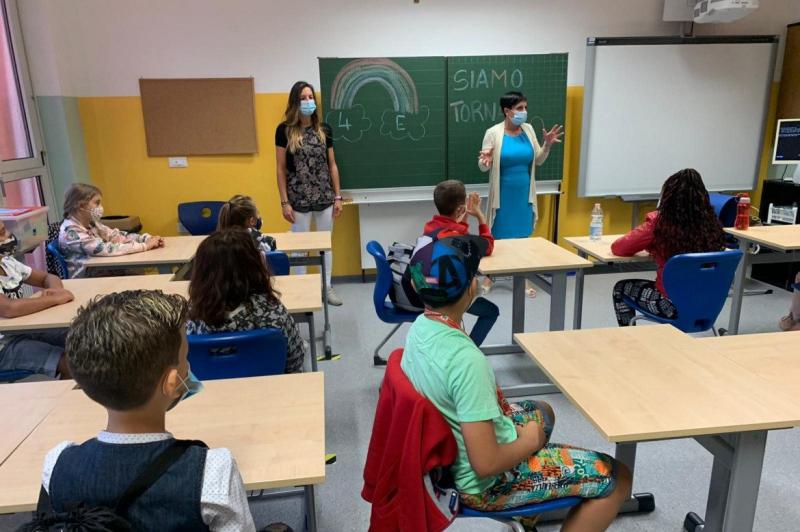Schools reopened on Monday, September 14 in most Italian regions for the first time since early March, when the Covid-19 health emergency caused the Italian government to decide to close schools and declare a nationwide lockdown.
Millions of students and teachers will return to classrooms within this week and the next.
A series of rules for the new school year have been implemented in order to try to contain the spread of the virus should there be positive cases.
Parents are tasked with measuring their children’s temperature every morning before leaving home. Children with a temperature of 37.5° or higher must remain at home. Some regions are asking that the temperature be measured at the entrance at school.
The capacity on public transport has been increased from 50 to 80%. With adequate filtering and air exchange, the capacity can reach 100%. School buses can be filled to 100% of their capacity if the travel time is less than 15 minutes.
Students must keep a distance of at least one meter when lining up to enter school. Any form of gathering must be avoided.
Schools may impose different entry times for each class.
Children under the age of 6 and students with disabilities are not required to wear a mask. The one-meter rule in class does not apply to kindergarten, as long as fixed groups are formed.
In primary and secondary school, students must be seated at least one meter from one another and two meters from the teacher’s desk. Many schools are expected to receive single-seat desks to increase the distance between students. This way, students are not required to wear a mask. If the distance of one meter cannot be respected, then they will have to wear a mask throughout the day.
Students must wear a mask every time they get up and in common areas. While on the move, even inside the classroom, students and teachers must always wear a mask.
In secondary schools, mask wearing may be imposed even when the one-meter rule is respected in areas with a high circulation of the virus.
Teachers will have to wear face masks at all times.
Masks will be provided free of charge to students and staff, for a total of 11 million masks distributed every day throughout Italy.
Recreation should take place in the classroom.
High schools may consider using a mixed system of in-person and remote teaching. Distance learning can also be used in the event of a class quarantine after the registration of a positive case; in this case, online lessons can also apply to primary and secondary schools.
Each school will have a Covid contact person to whom all suspicious cases can be reported and who will act as a link with the prevention department. In the event that a student has a fever or other symptoms associated with Covid, he or she must be placed in isolation, assisted by an adult wearing a mask until the student's parents arrive. The family doctor will then evaluate whether to subject the student to a swab.
If the swab is positive, it will be evaluated whether to test all classmates and teachers and whether to quarantine the whole class.
In the event of one or more positive cases, the school will be sanitized, but it is not expected to close.
The measures do not address the lack of adequate school facilities nor the understaffing of schools, according to some of the school personnel.











